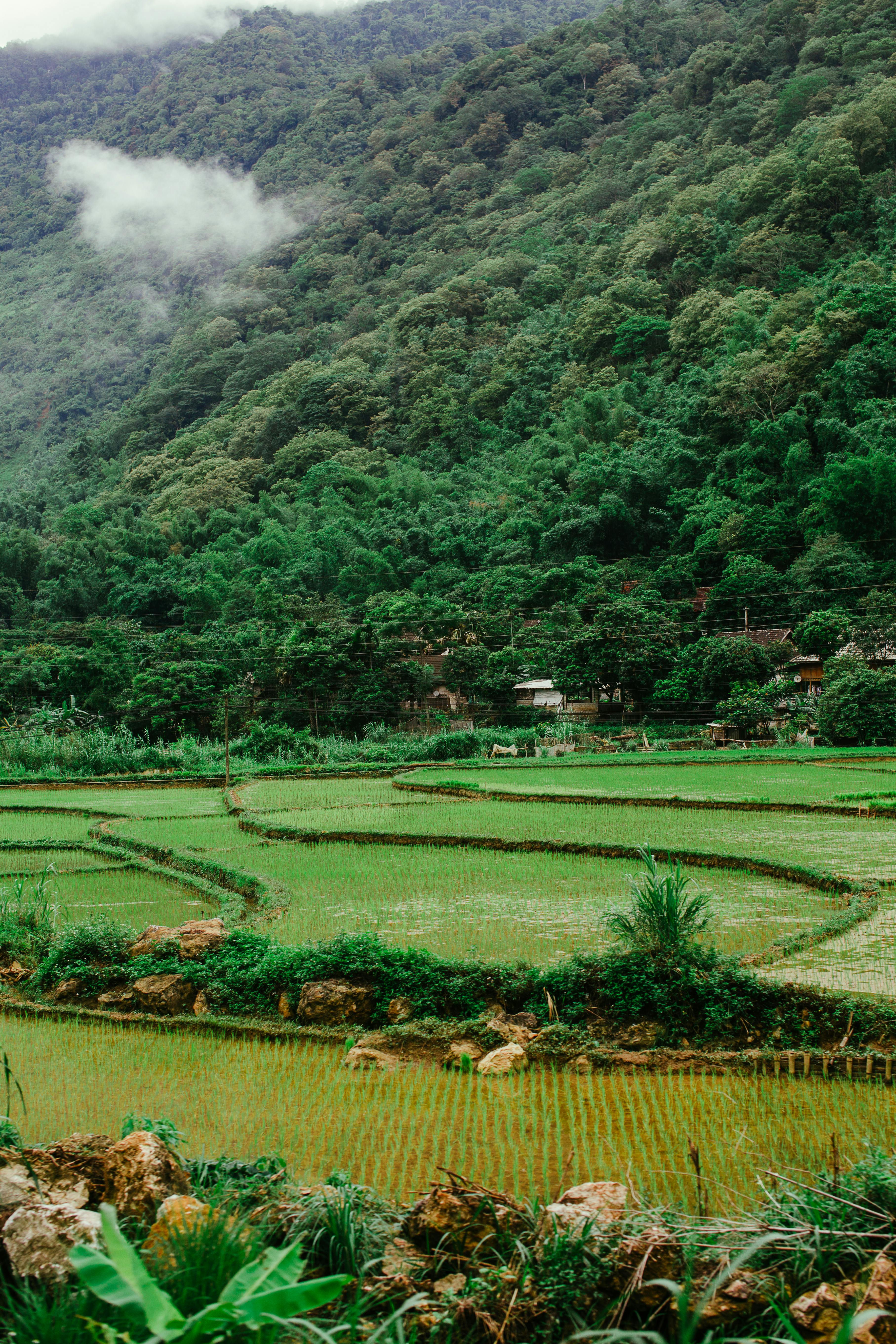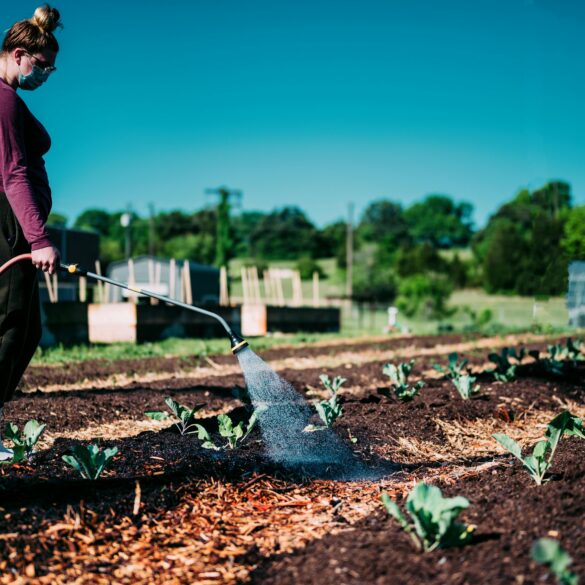Thailand’s Top-Ranked Sustainable Rice Farming Techniques Revealed
Funny thing is, the moment you mention “rice farming” nowadays, people either think of vast green fields or—at least if they’re in the agriculture sector—they imagine the tension between tradition and innovation, environmental stewardship, and economic survival. What struck me, having spent three years consulting on agri-technology across Southeast Asia, is just how much Thailand has come to symbolize both: a bridge between heritage and sustainable progress 1. Actually, what we’re really talking about here is something deeply human—a centuries-old cultural anchor evolving to meet 21st-century demands.
While many believe rice farming is “just planting and harvesting,” the reality in Thailand couldn’t be further from that simplistic picture. In my experience touring fields from Isan to the Chao Phraya basin, what you see is a layered approach: old wisdom meets data-driven decisions; local adaptation blends with global strategy; and most importantly, agriculture transforms from subsistence to sustainable, optimized production. Maybe this sounds like an ideal—but the numbers, stories, and results genuinely bear it out 2.
Why Sustainable Rice Farming Matters
Let’s step back for a moment. Rice is more than just food in Thailand—it’s part of national identity, social rituals, festivals, and family economics. Yet, the last decade has forced new urgency. Climate change? Check. Water scarcity? Increasingly worrying. Global markets, pandemic shocks, rising fertilizer prices—each has hit rice farmers hard 3.
Ever notice how the conversation about sustainability always circles back to yield versus environment? In Thailand, the answer isn’t binary—it’s both. From my perspective, sustainable rice farming optimization means producing more with less: less water, chemicals, emissions, but more knowledge, resilience, and community. Nobody’s pretending it’s easy, but Thailand’s progress is far from theoretical. Last year’s crop cycle, for instance, saw over 60% of commercial fields integrating eco-friendly practices—with measurable impact on soil health and farmer income 4.
Thailand’s Foundations: Culture Meets Science
Back in the day (and we’re talking a century ago), rice farming in Thailand was mostly rain-fed, community-managed, and almost entirely organic by default. I still remember an elderly farmer in Surin describing how his family “listened to the fields and the sky, not the textbooks.” Nowadays? You’ll see drones buzzing overhead, precision wet-dry cycles, and QR-coded bags of rice meant for export.
What’s crucial here—let me clarify—is that modernization isn’t about erasing local knowledge. In fact, the success of sustainable rice farming relies on blending indigenous practices (like the timing of planting festivals) with scientific innovation (soil nutrient analysis, stress-tolerant varieties). According to government data, more than half of Thailand’s agricultural R&D since 2018 has gone directly into rice science—soil management, pest control, water optimization, and new cultivation methods 6.
“True sustainability begins with the wisdom of those who know the land best, matched with the tools of science.”
In summary, if you’re picturing Thailand’s rice farms as caught between ancient tradition and modern disruption, you’re on the right track—but trust me, these fields are teaching the world to be smarter, not just bigger.
Proven Sustainable Techniques in Action
Okay, let’s step back. What methods are actually working in Thailand—right now, with real farmers, not just in academic journals? Here’s what gets me excited: While plenty of “innovations” never leave the lab, some of Thailand’s techniques show results across small villages and export-driven mega-farms. The best ones stick because, paradoxically, they’re old and new at the same time.
- Alternate Wetting and Drying (AWD)—By controlling irrigation, farmers reduce water use by up to 30%, lower methane emissions substantially, and—strangely enough—get more resilient rice plants.7
- System of Rice Intensification (SRI)—“Seedlings spaced further, less but deeper water” is the mantra. I used to think this was overhyped, but after walking SRI fields near Ayutthaya last autumn, I saw grain weight increase and pest issues drop. Turns out, roots matter.8
- Organic and Integrated Pest Management (IPM)—More farmers enroll in government-supported IPM training now than in the past ten years combined. Here, beneficial insects and biological controls often replace chemical sprays, significantly lowering environmental risk.9
- Precision Fertilization—On second thought, it’s not just about reducing fertilizer. It’s about timing and matching nutrient types to soil data. I’ve watched farm cooperatives move from blanket dosing to app-guided micro-dosing—yield increases were obvious, runoff nearly vanished.10
| Technique | Yield Impact | Water Reduction | Climate Benefit |
|---|---|---|---|
| AWD | Up to +15% | -30% | Lower methane |
| SRI | +10% to +20% | -20% | Healthier soils |
| IPM | Stable/increased | N/A | Biodiversity |
| Precision Fertilization | +8% to +12% | -12% | Minimal runoff |
Optimization: Real-World Success Stories
I remember a farmer cooperative in Nong Khai piloting the AWD technique after a catastrophic drought in 2019—they reduced water use, saved on pumping costs, and, shockingly, saw a jump in rice quality recognized at the international level 11. That’s the point where theory really meets reality.
“It’s not about copying trends—it’s about finding what matches our land, our season, and our families. Sustainable farming is built on stubbornly learning from experience.”
- Seasonal Timing Optimization: By adapting planting cycles based on flood-drought predictions rather than old calendar dates, rice yield variability dropped nearly 25% over three years.
- Local Seed Varietal Adaptation: Case in point: Sub-districts close to the Cambodian border now use stress-resistant “RD43” rice for salt-intruded soils, tripling export value.
- Community-Driven Knowledge Exchange: Rural learning centers gave village-level education on water-saving practices, with nearly 70% of farmers retaining the new methods after two cycles.12
Sound familiar? The more I dig into these examples, the more it seems that Thailand’s “secret” is relentless adaptation, local customization, and stubborn pursuit of sustainability.
Data-Driven Decisions and Local Wisdom
Data is like rice seed—it grows value only when thoughtfully sown. During my consultation with a university-led farming collective in Suphanburi, I noticed their transition from intuition-led to analytics-guided field management. The result? Pest outbreaks were contained faster, soil depletion rates slowed, rainfall prediction accuracy improved.
- Drones mapping plant health and watering
- Mobile apps tracking fertilization schedules
- Machine learning algorithms forecasting yield risks
- Community “field days” cross-verifying tech results with local insights
“The numbers are powerful—but the knowledge of soil, weather, and neighbor’s fields makes the system real.”
I’ll be honest—sometimes tech gets ahead of itself. But what really strikes me is the way Thai farms turn data into dialogue: the community, the university researcher, and the local wisdom keep this progress grounded. This, more than any single tool, drives sustainable optimization.

Next-Level Sustainability: From Farmer to Policy
Let me think about this for a second—it’s not just farmers in fields now, is it? Policy momentum has become a huge force in Thailand’s agricultural sustainability push. Which brings up another point: real change means everybody is on board. Government, local organizations, exporters, tech startups—it’s a “system,” not a solo effort.
In 2020, the Thai Rice Department implemented region-specific sustainability programs featuring yield insurance, soil health subsidies, and water-use quotas. Remarkably, according to official stats, about 48% of Thailand’s rice acreage now falls under some level of recognized sustainability protocol14.
- Water stewardship certifications tied to export premiums
- Soil organic matter assessment for subsidy eligibility
- Community education grants for women-led sustainable farming collectives
“We need more than policy manuals—what inspires farmers is seeing their fields thrive, their incomes grow, and their work valued across borders.”
Now, don’t get me wrong—rules matter. But in Thailand, sustainability standards usually emerge from farmer experimentation first, then get codified nationally. That, in my professional opinion, is worth emulating.
How Global Agriculture Learns from Thailand
You’re probably wondering: Is Thailand’s approach transferable? I need to revise my earlier point—while the “recipe” adapts by region, there are lessons readily deployable elsewhere.
- Empower Local Experimentation: Success starts at the village, not at the Ministry.
- Combine Tradition and Technology: Don’t throw out history for data. Fuse them.
- Reward Sustainability Results: Pay for environmental impact, not just volume.
- Share and Compare: Encourage corrections, failures, and knowledge exchange.
| Country | Technique Adopted | Adaptation Outcome | Sustainability Grade |
|---|---|---|---|
| Vietnam | AWD | +7% yield, -20% water | B+ |
| Indonesia | SRI | +10% yield | B |
| India | Precision Fertilization | +12% yield, less runoff | B+ |
| Cambodia | IPM | Stable yields | B |
From my years watching these patterns, one thing is clear: Thailand’s rice industry isn’t just “catching up”—it’s pushing the envelope for how sustainable farming is measured and rewarded worldwide.
“Thailand’s biggest export isn’t just rice—it’s the practical lessons of sustainable farming.”
Conclusion & Next Steps
Having worked alongside Thai farming cooperatives for several years, I have to say: sustainable rice farming here isn’t a buzzword—it’s a story of practical success, ongoing experiments, and intensely local adaptation. It’s not only about keeping traditions alive, but about ensuring future prosperity and resilience. What excites me since starting this research is the visible enthusiasm among younger farmers—people who want their land to be productive and environmentally safe, who see their work as globally significant, not just locally necessary.
Some of you are rolling your eyes right now—sustainability always sounds easier than it is. Trust me, there are failures, stubborn learning curves, uneven policy response, emerging threats. But what keeps progress alive in Thailand is a community that values both old and new, success and setback, soil and data.
Moving forward, the challenge will be optimizing further—combining next-gen agri-tech with deep-rooted local wisdom, staying adaptive in a changing climate, and measuring impact in community health as much as export numbers. Take a second to consider: what could your field, organization, or region learn from Thailand’s blend of rice farming tradition and rapid, responsible innovation?
Key Takeaways
- Sustainable rice farming in Thailand blends field-proven techniques with local adaptation.
- Optimization means matching science to soil, season, and community needs.
- Results are documented: higher yields, lower resource use, improved resilience.
- Knowledge exchange—not just individual expertise—is crucial for scalable success.
- Global agriculture should emulate Thailand’s responsiveness and collaboration.
References



